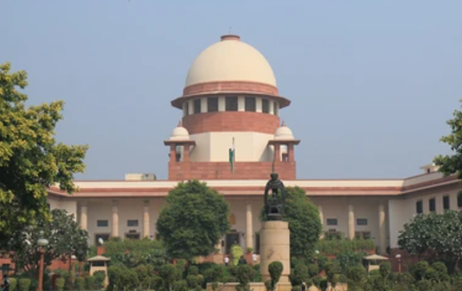Trademarks to Tyranny: Discussing the Balance between Dominance and Protection Capitalism as a system of…
Know the Roster System
January 12th, 2017 is a date earmarked in judicial history, an event that witnessed four senior most sitting Judges of Supreme Court of India, publicly raising concerns about the structural flaws regarding the functioning of the administrative division of the Supreme Court. They put forth the complete responsibility upon the shoulders of Chief Justice of India regarding roster system of the Apex Court. In this article, we would make an attempt to gain better understanding and clarity regarding this roster system and about the controversy surrounding it.
The word ‘roster’ can trace its roots since early 18th century, where it was originally used in order to indicate the list of duties and leave for military personnel[1]. In the contemporary world, it is defined as a system to allocate different tasks to all the members in order to achieve higher efficiency.
Since this system allocates tasks to the group members, it has to be under control of some decision making authority. The issue starts when the decision making authority is also to be assigned tasks under that system. The issue is regarding the misuse of that authority of decision making for any reasons whatsoever.
After sufficiently discussing about the meaning of a roster system, let us link it back to the Supreme Court:
1. Firstly, the efficiency of the roster system. As on November 1st 2017, the Supreme Court still had 55,259 pending matters, 24.69% of which cannot be listed for ‘hearing’ before Honorable Although the situation has improved as compared with half a decade earlier, when on November 1st 2012, the Supreme Court had 64,931 pending matters, 62.10% of which could not be listed for ‘hearing before Honorable Court[2]. These reductions in pending cases signify that we need a more efficient procedure for allocation of cases in order to achieve higher utilization of workforce. Hence, better management roster system seems to be necessary.
2. Secondly, regarding the issue of the source that confers such power to a decision making According to the Supreme Court Rules, 2017[3]. Chapter V: Powers, Duties and Functions of the Registrar, Rule 29, expressly states that the Registrar shall prepare roster under the directions of the Chief Justice of India, andall such powers, duties and functions of the registrar are subjected to any further special or general orders of the Chief Justice of India. This power bestowed by the handbook upon the CJI has been reiterated in a separate chapter dedicated to Roster (Chapter VI). It has further been mentioned in Chapter XIII: Listing of Cases. Therefore, as per the rules, the Chief Justice of India has an absolute authority in this regard. Also, to strengthen the argument a step further, we can take into account the precedents that have been established by the Supreme Court Judgments and thereafter been considered as the ‘Law of the Land’. In the seminal judgment of State of Rajasthan v. Prakash Chand[4], paragraph 67 clearly defines that regarding the matters of the High Court, the Chief Justice is the master of the roster( point 2), and this precedent has been considered in the later judgment of Campaign for Judicial Authority and Reforms v. Union of India[5] where the court has reiterated it and extended the understanding of authority of Chief Justice of a High Court to be applicable to the Supreme Court and the Chief Justice of India as well.
3. Thirdly, the issue is regarding unrestricted use of roster system by the Chief Justice which is not accountable under Constitution or under Supreme Court rules. And the issue can be rectified only by the sitting Chief Justice of India as he has a direct authority over the formulation of the rules of the Supreme Court. And here there is conflict of interest as it does not make much sense for a person adorning the position of Chief Justice of India to take a step in order to formulate a rule that will restrict his/her own power in the end. Moreover, if any action by way of Constitutional Amendment is attempted by the Legislature, it is more likely to be taken as an interference of the legislature in the matters of the judiciary and is likely to be struck down as being against the basic structure doctrine[6].
Another viewpoint can also be formed that based on the existing system, before the event took place, one of the four sitting senior most Justices of the Supreme Court would most likely have become Chief justice of India after some time and can then also have played an instrumental role in bringing out the they desired. Other than public awareness, this event seemed to bring out something more that would be constructive and tangible in nature.
Author: Mr. Madhur Tulsiani, Intern at Khurana & Khurana, Advocates and IP Attorneys. Can be reached at [email protected].
References:
[1] https://en.oxforddictionaries.com/definition/roster
[2] http://supremecourtofindia.nic.in/statistics
[3] http://supremecourtofindia.nic.in/pdf/LU/ppop2017.pdf
[4] http://sci.gov.in/jonew/judis/13613.pdf
[5] (2018)1SCC196



